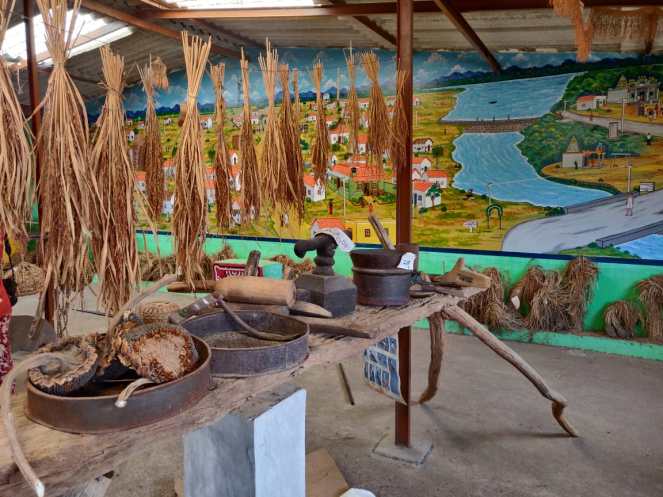On the occasion of World Museum Day today, here is a look at yet another unusual museum in Karnataka. Read on to find out more…
Lush green farms on either side made for an invigorating sight as I drove towards Shivalli village in Mandya taluk. The roads were deserted and there was hardly anyone around for me to ask about the rice museum I had heard about in this seemingly non-descript place. Finally, I stopped at a small shop and asked for “Bore Gowda”, the name of the farmer behind this initiative. The man was puzzled and after a few minutes of back-and- forth exclaimed “Oh you should have asked for the organic farmer or at least say “Bhattada” (translating to paddy) Bore Gowda, he is well-known in the village!” Quite relieved to have finally made it, I quickly made my way into the dusty side lane of Bore Gowda’s courtyard home, a part of which has been converted into a museum.

Innovative venture
Located on the first floor of one part of his house, the rice museum which is the brain child of Bore Gowda is insightful to say the least. Set up in 2009, the museum has a whopping 210 varieties of indigenous rice varieties on display. All of them have been collected and preserved by the agriculturist.

The walls of the small yet engaging museum have paintings that depict the entire process of paddy cultivation right from preparation of the soil to sowing, transplanting the seedlings, ploughing, harvest and post-harvest. Apart from paddy varieties, the museum also has several varieties of ragi (finger millet) which is an important cereal and extensively cultivated crop in Karnataka.

Farming tools of the yesteryears including wooden ploughs, sickles, cane baskets used during harvest and metal vessels to store the grains gives visitors an idea of the effort behind paddy cultivation. “Hybrid varieties have taken over in a quest for increasing yield and native varieties will soon be a thing of the past for future generations if we do not preserve them” adds Bore Gowda who has received several awards for his contribution in promoting sustainable agricultural practices.

Engaging display
Other interesting exhibits include the different varieties festoons aka thorans made creatively from naturally dried young paddy plants. An auspicious symbol of peace and prosperity, these are hung in the front of main doors of houses.

Do not miss the antique wooden cradle, the indigenous way of storing milk and curds by hanging them using coir or jute ropes and the traditional spherical containers made from straw to preserve rice; symbols of the eco-friendly and sustainable way of life of the yesteryears.

An edited version of this article was originally published in The New Indian Express. The museum is be easily accessed by road and is about 3 hours from Bangalore (115 km) and forms for an insightful day trip.
If you are based in Bangalore, here are some interesting museums in the city.


Nice article…thanks…. I liked that cane basket the cradle….nice museum…
Thanks so much, yes it is a wonderful museum:)
It seems like he is man of dedication. It was an implemented in an awesome way really. Hats off to this guy.
Yes you are right:)